Colombo, Sri Lanka's largest city is noisy, frenetic - and just a little crazy!
Thankfully, the breakdowns, snarled traffic and power cuts are received with a shrug and a smile. While the Sri Lankan capital holds less obvious interest than many other parts of the island, it's very colourful and worth a look.
North of the centre is the Fort district, Sri Lanka’s business centre. South is Galle Face Green, a seafront expanse of occasional green. East of the fort is the pungent Pettah bazaar district.
Culture buffs shouldn't miss the National Museum, the Art Gallery, and the city's mosques and temples.
| Places in Colombo | Description | Gallery |
|---|---|---|
| Independence Square | Independence Commemoration Hall located on Independence Square (formally Torrington Square) in Cinnamon Gardens, is a national monument in Sri Lanka. This was built long after independence was gained from the British rule on February 4, 1948.
The structure is made of concrete, and bear columns similar to what is found in ancient Sri Lankan architecture and it was designed to resemble a Kandyan audience hall. The rows of stone lions that guard this great monument are a unique feature of this Commemoration Hall. This is also an impressive piece of art that clearly signifies the ancient architecture and the elaborated stone carvings and painting found at the memorial hall are simply breathtaking. | 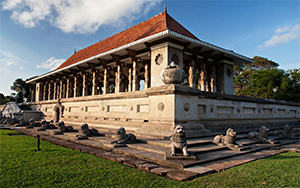 Book Now Book Now |
| National Museum | The Colombo national museum is an Italian architecture colonial type mansion which was founded by the British governor of Ceylon at that time, Sir William Henry Gregory. This treasure house is the Sri Lanka’s most prestigious, oldest and largest museum.
The museum is known to be the first public museum in Sri Lanka and has a vast collection of Antiques and many other Artefacts’ from all over the countryside. When the national museum was first opened to the public in 1st January 1877, it had a mere 800 items on display. Today that number has grown to over 100,000. | 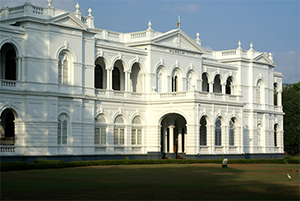 Book Now Book Now |
| Colombo Fort | Colombo city is an exciting place especially where the Colombo Fort District is concerned. The Fort was primarily built by the Portuguese and developed by the Dutch after invading the Portuguese regime. The Colombo Fort and the Colombo Harbour have a long history. This was mainly used by Greeks, Egyptians and Arabian merchants until 1506 for their shipping purposes. The Portuguese took control of the Colombo Harbour and they built the Fort as a defence mechanism from invaders. The fort they built around the harbour was named Colombo Fort. | 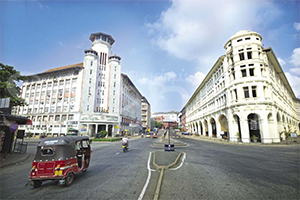 Book Now Book Now |
| Colombo Lighthouse | The old Colombo light house was initially establish in 1860 as a clock tower and the lantern was added in 1865 and transformed in to a light house. The original clock (made by the same manufacturer as “Big Ben”) was replaced in 1913.
The tower is located at the junction of Chatham Street and Janadhipathi Mawatha(formally known as Queens Road) in Colombo Fort. At present the light house is not operational, but functions as a clock tower and is designated as a monument. It is said that this cylindrical brick tower with lantern and gallery is the only lighthouse in the world which also tells the time in the middle of the busy road. | 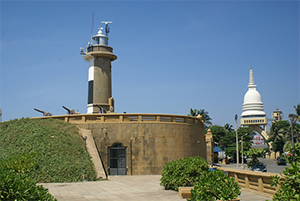 Book Now Book Now |
| Gangaramaya Temple | The Gangaramaya Buddhist temple is a beautiful and vibrant temple with a history that dates back over 2,000 years. This temple was said to have been built in the 19th century by a trader and ship owner named Don Bastion, who had played a leading role in reviving Buddhism.
Located beside a Holy Bo Tree on the waters of Beira Lake, the temple is only accessible by crossing a wooden bridge. According to historical records, the Lord Buddha is reputed to have preached under this Bo tree which is considered as a sapling of the Sri Maha Bodhi and is over 100 years old. | 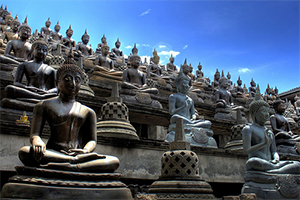 Book Now Book Now |
| Wolvendaal Church | Wolvendaal church is one on the oldest churches built during the Dutch era in 1749. The interior is decorated with Dutch furniture with the wooden carved pews, chairs, pulpit and lecterns.
One of the major highlights of the church is the Tombstones of 5 Dutch governors, including the oldest Dutch tombstone in Sri Lanka, which were moved from a church with in the Fort in 1813. The other attraction is the church organ, which is still in its perfect condition. | 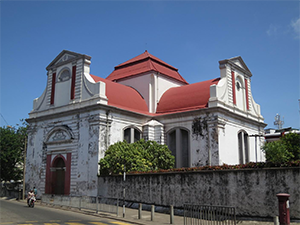 Book Now Book Now |
| Jami Ul-Alfar Mosque | Jami-Ul-Alfar Mosque at Second Cross Street, in the Pettah is one of the most striking buildings in Colombo and can be spotted very easily.
This beautiful red and white design architecture mosque began to construct in 1908 and took almost a year to complete. The Mosque is striped red and white like a layer cake, a design that is reminiscent of another mosque which was also completed in 1909, the Masjid Jamek of Kuala Lumpur. The architect of the Jami-Ul-Alfar was one H.L. Saibo Lebbe. | 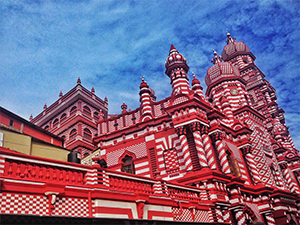 Book Now Book Now |
To book a tour, please email srilankadrivertours@yahoo.com or nilupul7h@yahoo.com


